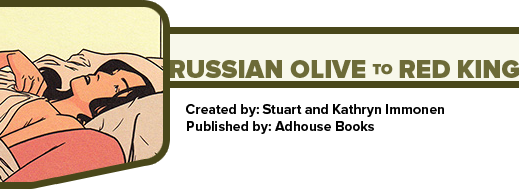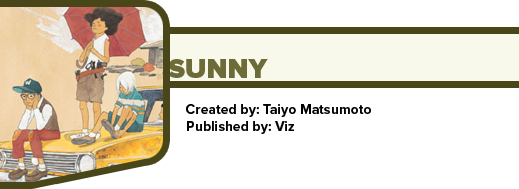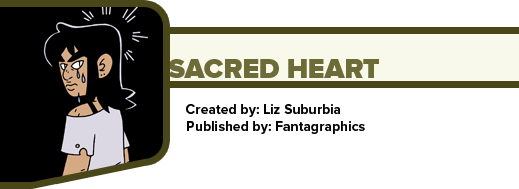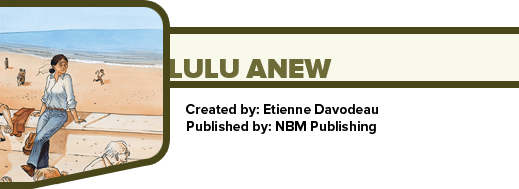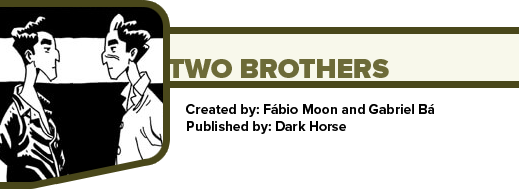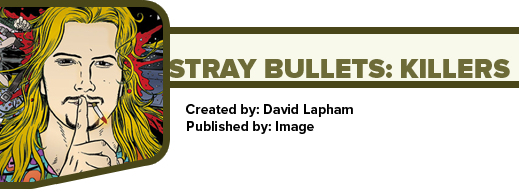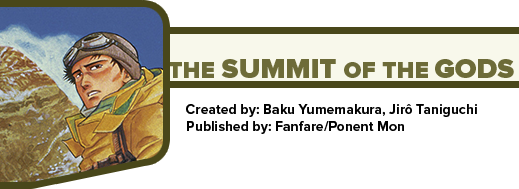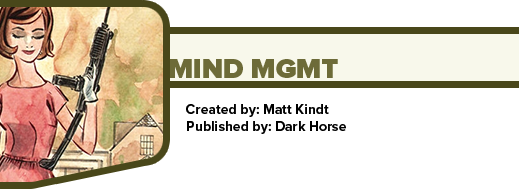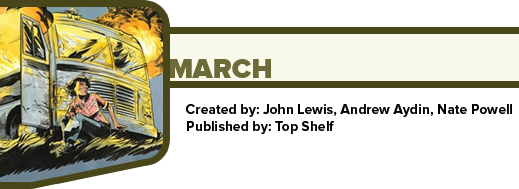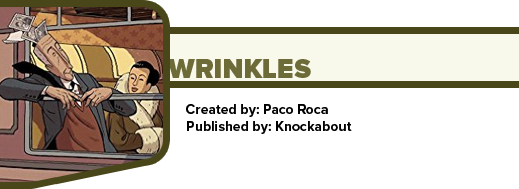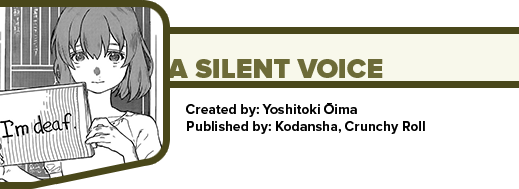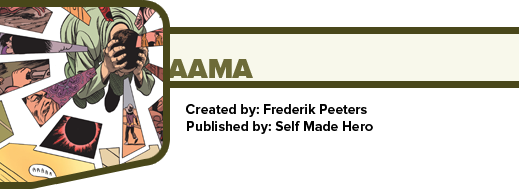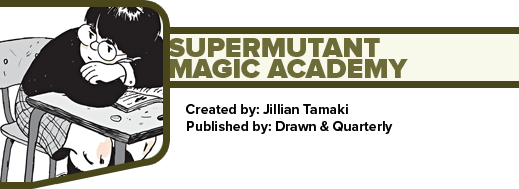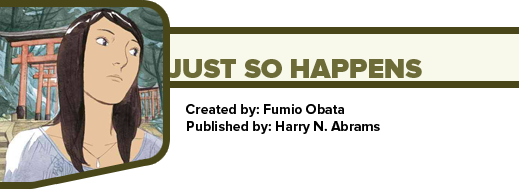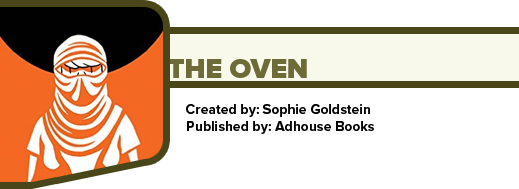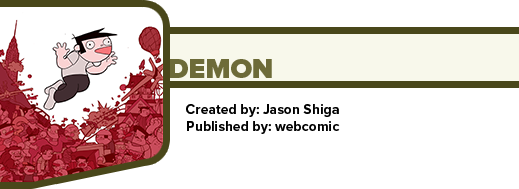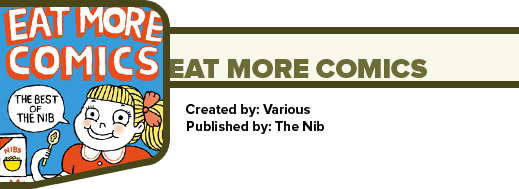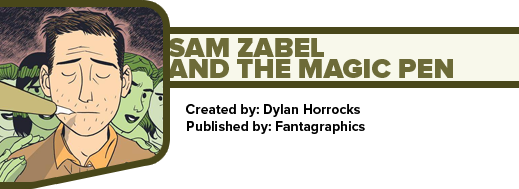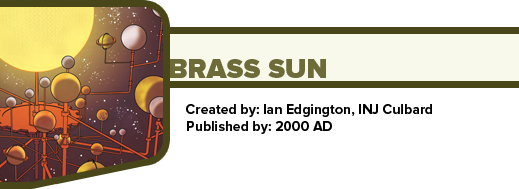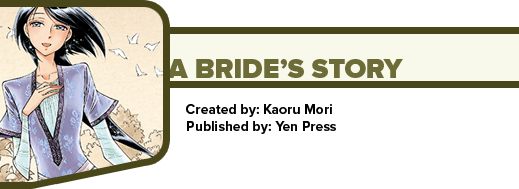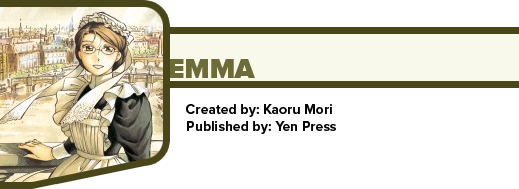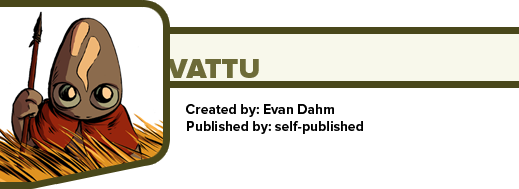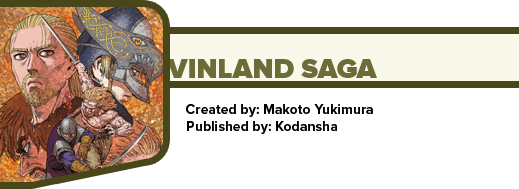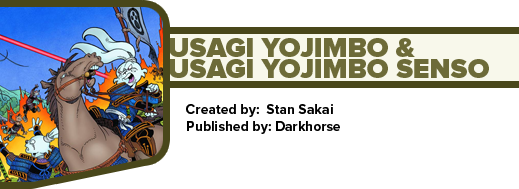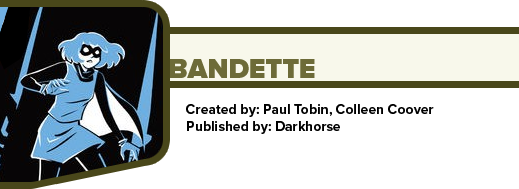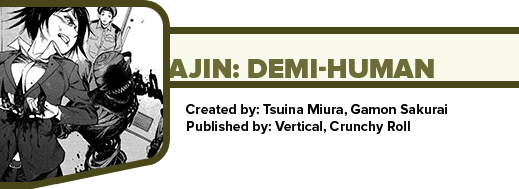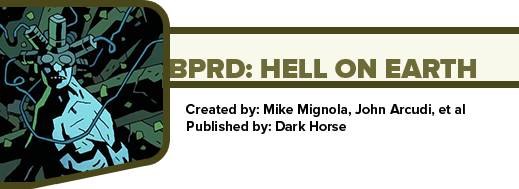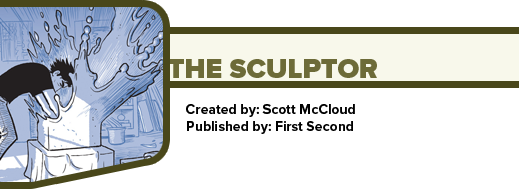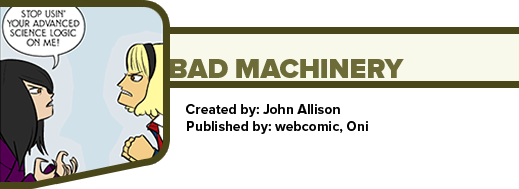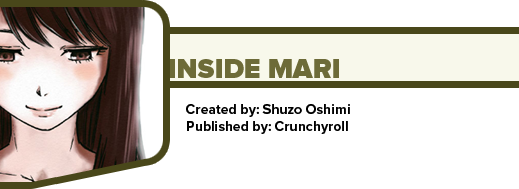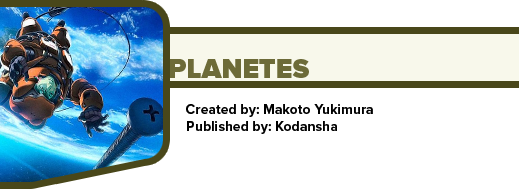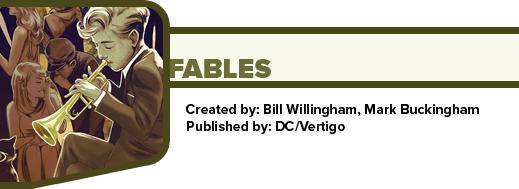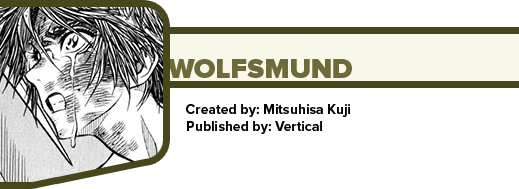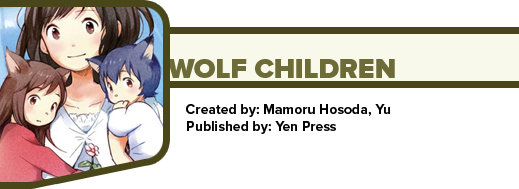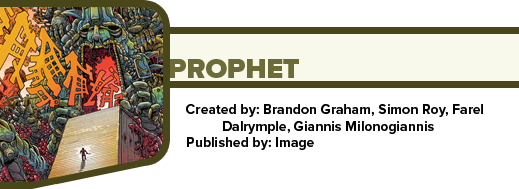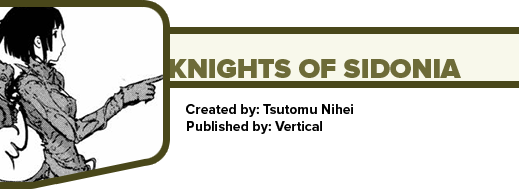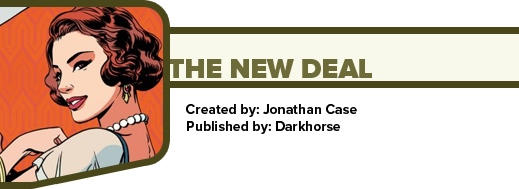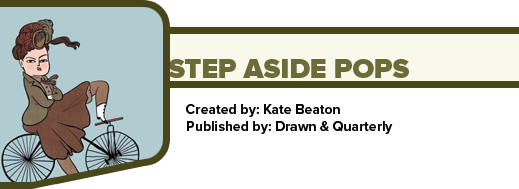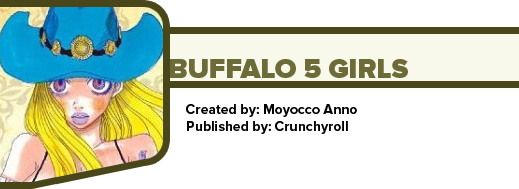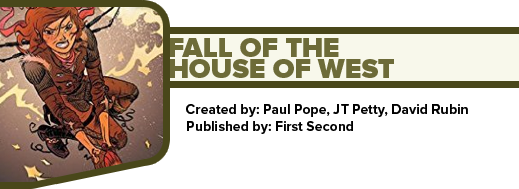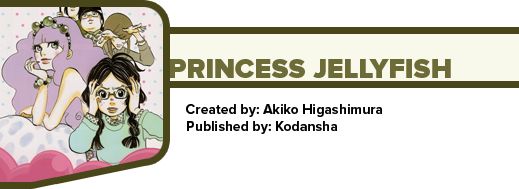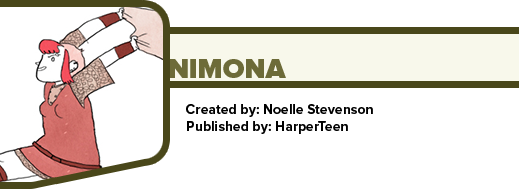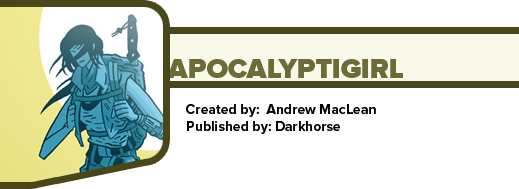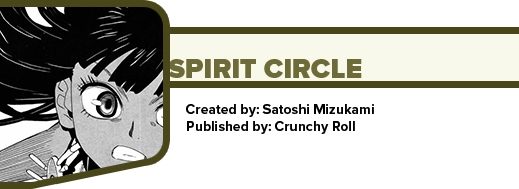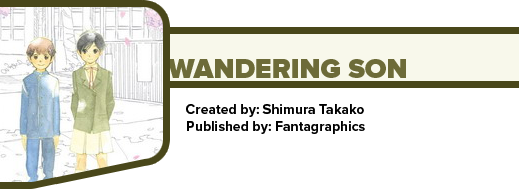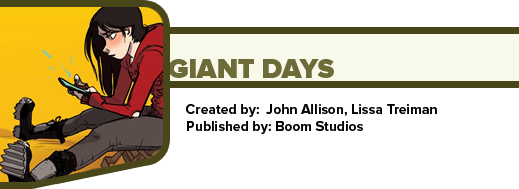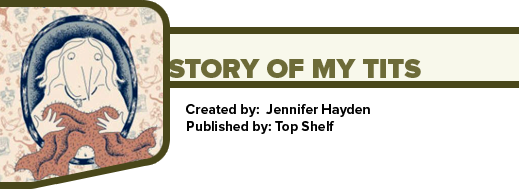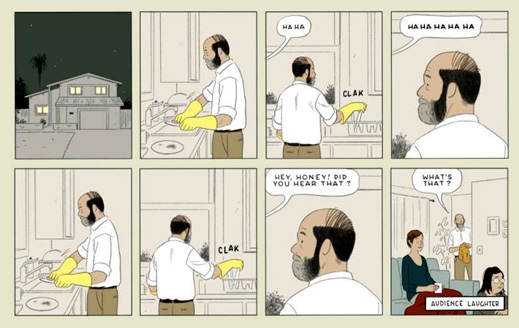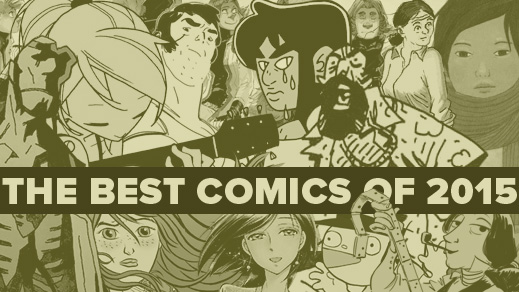

Welcome to my annual attempt to share what I feel are the best comics of the previous year (in this case, the books of 2015). Of course all the usual obnoxious caveats apply: a) that these lists are always only going to be a highly subjective record of tastes of a particular moment in a given segment of time; b) that it's virtually impossible and actually impossible to retain the same memory of a work read in January as it is of one read in November; c) that I of course haven't read a great many of the potentially fantastic works from across the year. All that's the same-ol' same-ol'.
I'll be including:
- Comics printed in collected form for the first time in 2015
- Comics printed as books for the first time in 2015
- Comics printed as books for the first time in the US in 2015
- Comics published on the web in 2015
- Comics published through digital subscription services like Crunchyroll in 2015
- Important comics reissued for the first time in many years
- Comics printed in December 2014 that I didn't see until 2015 (i.e. books that weren't released in time to reasonably have been included in my 2014 list)
(Example: I don't read comics as individual issues. Even though the entire Mind MGMT series ended in 2015, it won't end until 2016 for me because I only read print comics series in collected form. So when I list Mind MGMT, that's only referring to vol 5.)
I believe that covers all my bases. Really though, I'm less interested in being a stickler for details than I am in just flat out recommending you some great comics reading from over the last year. So let's do that.
My Best 75 Comics of 2015
1–1011–2021–3031–4041–5051–6061–75
MetricsExclusions 1Exclusions 2Navel Gazing
In Russian Olive to Red King, we have this magnificent admixture of craft, colour, tone, and experiment that helps nudge the seams of the comics package in exciting ways. It's not perfect and I have quibbles, but it really is lovely and tells a compelling story. Stuart Immonen's illustration is some of the best of his I've ever seen and the colouring is at all points perfect.
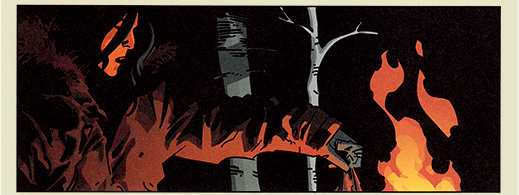
This wasn't actually my favourite book of 2015, but a number of features combine to push it ahead of everything else. It's not a clear winner. But it is, I think, still the winner.
Matsumoto's evolving series of pericopes peeking in on the lives of the residents of a late '70s foster home is at once vital, brooding, joyous, grim, and heartfelt. It may be the perfect encapsulation of the human condition. And amazingly, the series improbably improves with each volume. In 2015's volume 5, I feel more and more the need for the series' finale in volume 6 to provide some sort of "20 Years Later" epilogue—if only for how crisply and seamlessly these characters have been brought to life for me. My heart pulls for these kids—and for the adults who mind them. With every victory I soar and with every defeat I sorrow. I can think of no better compliment than to say that Sunny is one of the most honest, affecting works I've encountered. I love that this exists and I love the care with which Viz has packaged it.

The chapter this is pulled from is existential human madness. (aka everyday life)
This kid, Sei, is introduced in the first chapter of vol 1. He's the new kid. His mom dropped him off at the foster home because she has her own stuff going on. He is sure it's temporary, but by vol 2, it's pretty clear that it isn't. In this chapter, a new kid is introduced to the home. Same circumstances as Sei, so Sei's showing him around, being a pal, trying to help him through what will inevitably be total abandonment from his family.
Like two panels after this, the new kid's mom picks him up and the remaining six pages are just Sei taking that in. It's very WTF in the normal life kind of way.
At the same time as things are falling apart and hope is being trashed, human nature is standing strong and willful. I wouldn't argue it's one of the most important comics series ever made, but if I heard someone make the argument I'd probably listen closely and nod along at appropriate points because I'd half believe him.
Sacred Heart was phenomenal. It was like reading Roberto Bolaño fish together a comic about American teenagers and rapture cults. It was chaotic and haunted and full of life. It's a brutal, mysterious book and really embodies the kind of visceral realism Bolaño introduces in Savage Detectives. It also carries the apocalyptic kind of vibe from 2666. Suburbia's pacing was magnificent and the slowburn of discovering what is actually happening is delectable. I loved the way she would sometimes punctuate each cell of a montage with onomatopoeia.
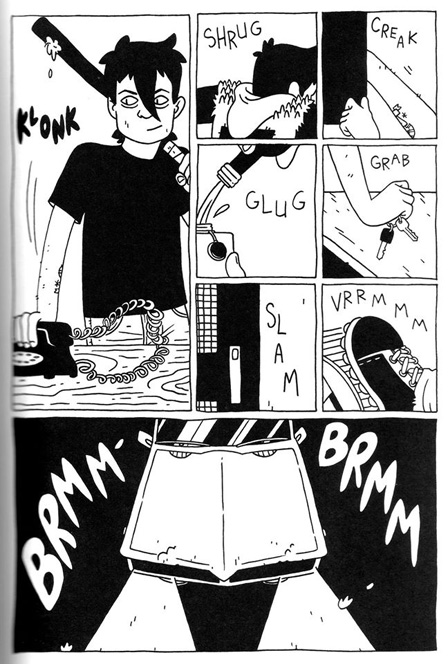 The punctuation of each action/panel with onomatopoeia is great.
The punctuation of each action/panel with onomatopoeia is great.
Suburbia's illustration of music was so so so much better than anything else I've seen in the field. Scott Pilrim has this sort of wobbly ghost electricity rising like incense from the instruments and that's okay. Jem has these crisp, sterile pink streams that swirl around and ghost through everything, but it always feels electric but soulless. (Which is fine because Jem always feels like corporate pop to me.) In Sacred Heart music has this physicality. It bombards and punches and people get swept up in it and get out of its way.
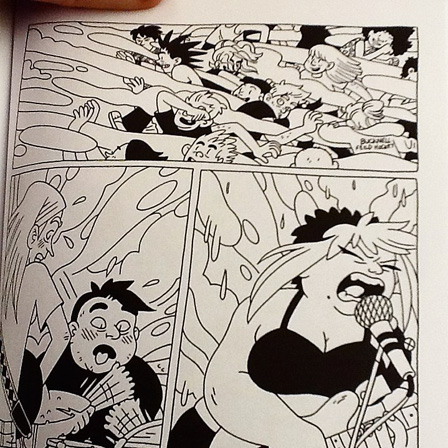 Lookit those kids being slammed with music!
Lookit those kids being slammed with music!
If I have one thing against the book, one quibble, it's that I wanted more resolution at the end. Without spoiling for anyone playing along: I want to know who would appear in a Sacred Heart 2 if there is one and in what capacity. It's not necessary to the book, but that bit of ambiguity stung me slightly.
I expected to like Lulu Anew, but I didn't know to expect it to be quite this good. In a lot of ways, the book is a tonal sibling to Ruto Modan's The Property. Lulu, tired of her husband's lightly abusive (but also persistently abusive) manner, takes a break from her life. She disappears, telling no one of her whereabouts and begins a small adventure with no particular end in mind. The entire episode is told after the fact by gathered friends, piecing together the mystery of her absence and what it all means. The device allows for information to trickle out at exactly the right pace, and by the end when we circle back on the beginning of things, we are immediately satisfied. (If that kind of thing is where one finds satisfaction.)
After reading Lulu Anew I was made so confident in the creator's abilities that I immediately purchased his earlier work, The Initiates. I hope to read it soon after finishing this present list.
Two Brothers is foremost a book to be laid on a coffee table so that guests will have something astounding with which to occupy themselves while you futz around in the kitchen preparing exotic teas and fancy adult beverages. It is a work of beauty. Dark and grueling, yes, but beautiful for all that. Bá has always held a little dynamo of the kind of expressive shadowed minimalism that makes Mike Mignola's art the most magnificent stuff to ever grace the earth, and the choice to publish Two Brothers without colour forces that to be on full display. There were pages I stared at overlong just trying to understand how they were accomplished.
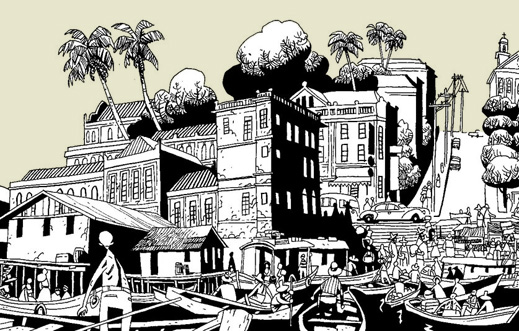
As for story, Two Brothers won't likely have you asking existential questions about faith and purpose and meaning. It is, instead, pretty firmly rooted in the pre-20th century family of novels dedicated to charting the collapse of a family or dynasty. From its first page we know where things are headed and our goal is only to lend an ear while the fall of the house of Halim is laid out like funeral clothes, that we too might mourn the passing of a well-meant but ultimately self-destructively selfish family.
In 2014, when the final chapter of the original Stray Bullets series landed, I was elated. It was the perfect, flawless capstone to what had gone before. Virginia Applejack, wounded but triumphant! It was one of my favourite finds of the year. When I heard Lapham was beginning a new Stray Bullets series, I was skeptical and reluctant because that's how I am. Once it was collected, I purchased the volume but let it sit unread for a couple months. There were other books I was excited about and I doubted that Lapham could actually capture what made Stray Bullets special and amazing in the first place.
Killers, though, is the perfect distillation of everything the series is. Killers is lightning bottled. It's frantic, depraved, and vibrant. Killers is its own series with its own numbering, but it might as well just keep the chapter numbers going, 42, 43, 44, etc. Except that this Virginia Applejack story is so much a standout Virginia Applejack story that it may as well just continue standing up and apart.
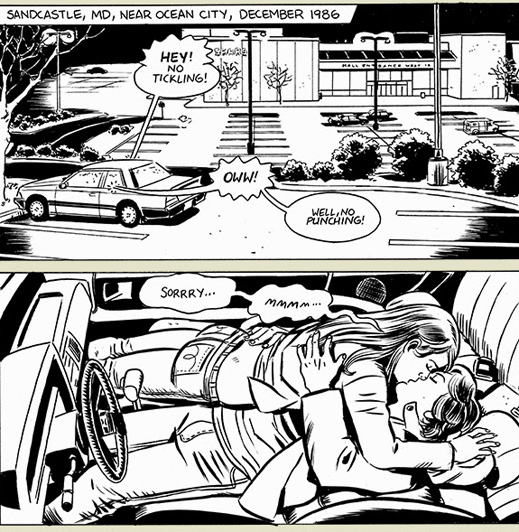 This may not look like mind-boggling crime comics but, man, there is so much crimes.
This may not look like mind-boggling crime comics but, man, there is so much crimes.
I'm rather horrified that I haven't yet reviewed Stray Bullets, as it's one of the best comics of all time and easily far and away my favourite for the spot of All-Time Best Crime Comic. And while picking up the Stray Bullets: Uber Alles Edition (the fancy name for the single-volume collection of the original series) is a perfectly sensible place to start and gives a lot of background on the context for the present volume, Killers functions perfectly fine on its own.
(My only complaint is that as this is a Virginia Applejack story, there is the obligatory Amy Racecar story included—and I hold a hate for the Amy Racecar stories that goes back even to the late '90s.)
With the English-language release of the final volume Yumemakura and Taniguchi's mountain-climbing thriller, we receive the complete chronicle of among the best manga series ever devised. Taniguchi is one of the treasures of the medium, and the majesty of his work on Summit of the Gods should not be underestimated.
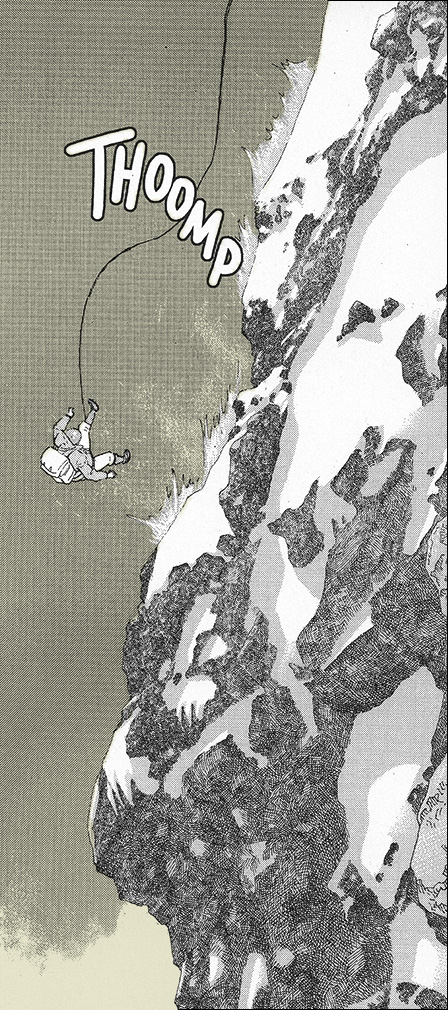
I have essentially no interest in mountaineering and largely view Everest climbs as the province of fools, but Summit is among the most thrilling, grand, and empathetic examinations of the culture one could ever hope to read. So much of the time reading these five volumes I was on tenterhooks. I highly highly highly recommend throwing yourself into the magic of what these two creators have brought together here.
It's hard for me not to gush over Last Man (even if I cannot figure out whether it's Last Man or Lastman). For whatever reason, I am tempted to pretend that I'm above passionately boosting for a series. All the same though, I've long argued for the essential subjectivity of the critic's role—and even more than a critic, I count myself an evangelist for good comics. And Last Man is good comics. Actually, it's very good comics. So maybe now I'll have another book to recommend constantly and incessantly and breathlessly forever—right alongside Cross Game, the book I'm generally most known for hyping rabidly.
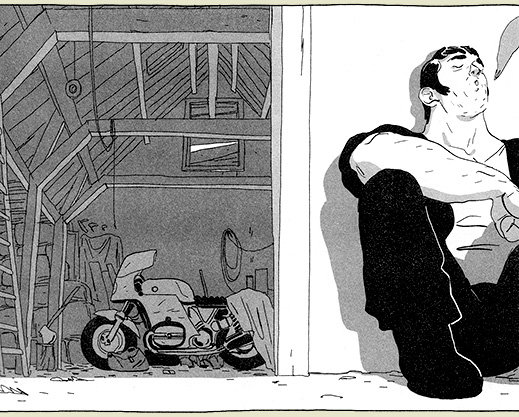
In 2015, three volumes of Last Man reached us here in the US. The first two were stunningly devised with some of the most fluid, vibrant drawings you'll ever see. The third volume is a straight-ahead departure but functions as a bridge between the two-volume preface and the final nine volumes we will expect to roll in over the next three years. This is pure shonen-esque excitement, only done from a Continental vantage with its own tropes to flaunt and engage.
Matt Kindt continues to produce one of the most bafflingly smart series on the market. The twists and turns come furiously and often. Honestly, with only a single volume left in the series, there's not a lot to say but that he never disappoints and I can't wait to see how he wraps this up. (Vol. 6 drops later this month and I am bursting with excitement.)

Writer David Carlson does an admirable job taking what could have been a story told via a wikipedia summary and twists it into something ranging and delicious, a complexity revealed by pieces and parts through visions and allusions. It's an informational book that educates while it goes. Don't know what a glim box is? You'll soon learn. The history of Bentham's panopticon? Covered. Want to know more about Braille? This is your book. Education is only employed so far as it will make the story come alive, but for that Carlson chooses exactly the right things to highlight. Like a map of the railroad lines circa 1929. Just a bit piece, almost entirely unnecessary. But it informs and magnifies the work.
As well, The Hunting Accident is a very literary work. Those of you who've read my review of Fun Home may recall that I was skeptical of Bechdel's use of the literary allusion, that I found it skirted pretension too closely for me to be entirely comfortable with it. It often felt tacked on and sometimes gimmicky. With The Hunting Accident, we feel none of that because the profusion of Homer and Virgil and Dante and Emerson and more obscure authors are intimately connected with Rizzo's own Infernal descent through the hell of Stateville prison.
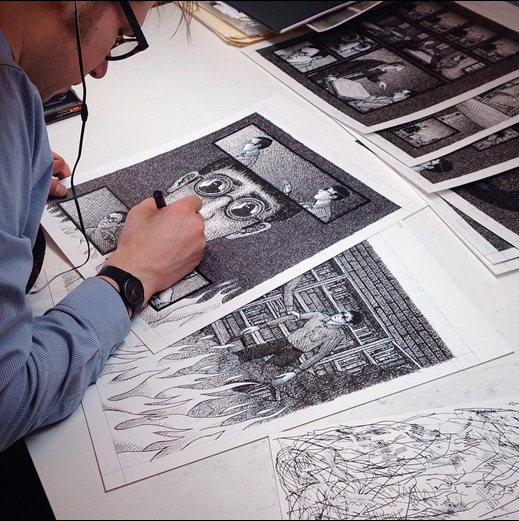 Landis Blair, in the process of ruining his wrist and eyesight for all time
Landis Blair, in the process of ruining his wrist and eyesight for all time
Sometimes when you have a larger-than-life figure, the best way to approach them isn't through straight biography; sometimes you want to sneak up on them obliquely. My favourite treatment of Hollywood legends is David Niven's Bring on the Empty Horses. Niven collects a series of personal anecdotes to paint the portrait of a bucketful of Hollywood names. Clark Gable, Errol Flynn, Bogart and Bacall, etc. The story is resolutely Niven's, but through him we unveil full and real lives for these other giants of the era. It's delightful and probably far better than a straight biography would have been. And that's exactly how we see Leopold in The Hunting Accident. He's not the star. He's not the focus. But he's so much a looming presence—and so essential to the development of Rizzo's story—that the book can't help but pull back the curtain on who he was a bit. The Hunting Accident is never not the story of Rizzo and his son, but since Leopold plays such a tremendous role in that story, it becomes his story as well.
The Hunting Accident was available in 2015 as a Kickstarter project, but the creative duo have found a publisher and will be announcing details on wider release soon.
In 2013, I saw Nate Powell at SPX and we talked a bit about March, about what to expect from vol 2. He described it as kind of the Empire Strikes Back of the series, a dark, dangerous extrapolation of John Lewis's story. And Powell was dead on the money because this is some grim history. I hate that this story is so relevant and important at this precise hour in our American experiment, because March Book 2 chronicles some deeply revolting stuff—the story of the playground of civil rights, the tug-of-war between good and evil (to vastly simplify and reduce the powers and motives of those involved).
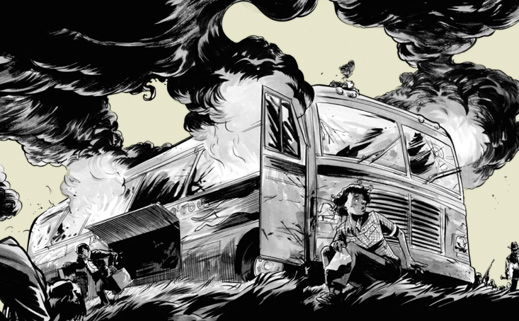
I talk up a lot the value of graphic novels in drawing out empathy in readers. For many of us, the best way to understand people who are different from us or other than us is not through dry academic description—much better to feel the life of another person as if you were intimately concerned with their fortunes. Representative John Lewis, Andrew Aydin, and Nate Powell have succeeded tremendously in bringing a particular milieu of the middle of the twentieth century to a point of contact with the soul of the reader.
Post-apocalyptic zombie fiction has never been better. Which is good because the post-apocalypse is pretty well played out and man do I hate zombie fiction. But Sundberg's vision here is almost entirely unique in every way.
1) The remaining civilized world is so far limited to Iceland, fortified pockets of Norway, Sweden, and Finland, and a single island of Denmark. That's a rare and interesting setting for a story told in English.
2) The zombies aren't zombies like we typically think of zombies. There're also corrupted beasts and now, apparently, ghosts (?). The lore of this new world is extensive, detailed, and imaginative.
3) Sundberg's art is gorgeous. It's luscious and the way she affects mood through colour is essentially like nothing I've seen.

The series continues online but I was fortunate to pick up a hardbound collection of the first volume. It is one of the prizes of my too-extensive-for-our-house graphic novel collection.
After years of leaving the art in his Hellboy series to competent and talented (though lesser) lights, Mignola returns to his major character to usher him through the realms of the afterlife. It's fascinating and lovely and Mignola once more proves that probably no one can come near to touching even the dais of his throne. Hellboy In Hell is a weird work and i look forward to seeing it complete. It's ambitious as hell. Obviously.
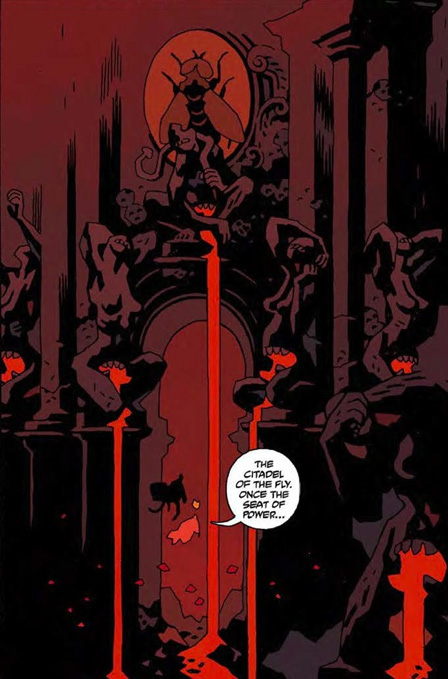
The drama of daily living with a fading mind is told with humour and verve and a lightness of being. And I found myself growing more and more anxious. These amusing anecdotes and funny bits and pieces of lives gone askew were toying with my deepest and tremblingest insecurities. On the surface I was enjoying Roca's book and the story of Ernest's progressive psychological collapse. It's bright and colourful and lovely and well-illustrated and well-paced. But in the midst of my enjoyment, the terror of existence roiled and rumbled. By the end, I was panicked and undone. Roca had done so good a job of exploring the gradual dissolution of selves that I was entirely exposed, my oldest fear made raw and calamitous—all within one hundred pages in which nothing incredibly terrible happens save for that a handful of people gradually forget themselves. And that's the magic of story.

The Greek stories are old and by their familiarity often become unfamiliar to us. We forget the details. We remember the names, some of them, sure. Heracles (or maybe we insist on Hercules). Zeus. Hera, Hades, Aphrodite, Hermes. We remain cognizant of the tentpole events probably. Heracles vs the hydra. Uhm, some other stuff. Did he fight the Minotaur? Medusa? He did those twelve things, right? We forget all the details though. All the motivations. All the crazy, disgusting, maddening dramas that consumed the hero simply because a Goddess was pissed off at her philandering husband who chose cross-species romances instead.
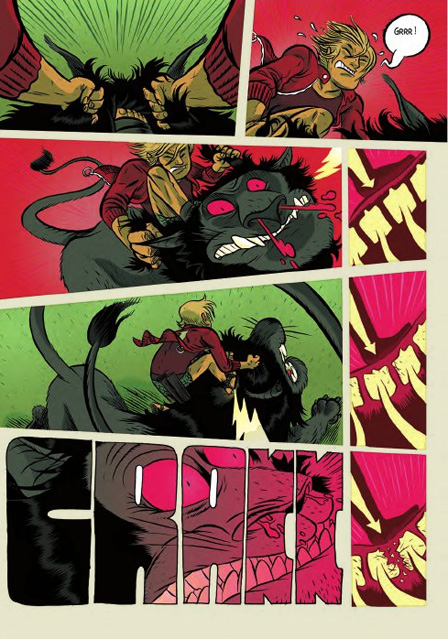 Oh snap
Oh snap
The Hero is simultaneously fanciful with the details and wildly accurate with them. It tells a version of Heracles' life that blends fantasy with technology set against a vibrant palette of colour and violence. There're internet and cellphones and television and cars and people wearing togas and using swords and archery. It's bizarre and perfect for its vision. And I feel as though I've been reintroduced to Heracles after decades of estrangement.
Several years ago I ran into a stand-alone story by Oima called "A Silent Voice" about a deaf girl new to an elementary school and the mischievous boy who instigates a prolonged war of bullying against her. It was a sweet, tragic story of redemption and comeuppance. I loved it. When I saw the story had been expanded into a 7-volume series, I was excited but worried that she would over-extend and pad the story and suck all of its charms away. I needn't have worried. Oima proved herself perfectly able to extend her vision for the story and created one of my favourite manga stories ever.

A Silent Voice explores themes of identity, belonging, alienation, disassociation, suicide, bullying, self-confidence, anguish, forgiveness, friendship, and deafness. It is a thoroughly winning and charming book and Oima's art is fluid and self-assured. She has a deep talent for illustration.
Frederik Peeters' euro-sci-fi wrapped up with its fourth volume at the beginning of Autumn 2015 and fills out nicely as an expansive extrapolation into the evolution of the species and what a forced renegotiation of the nature of the human consciousness might look like.
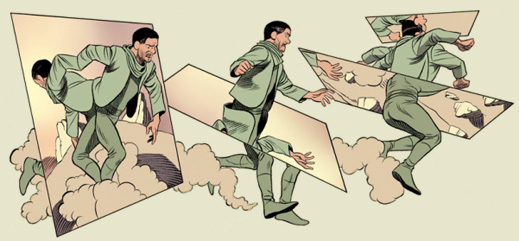
Easily the best comic I've read about a band in a decade. Van Meter's return to the series goes off hitchless from the reader's end, and this was one of the most thoroughly delightful books I had the fortune to read this year. McClaren's art is the perfect marriage to the story of Zero trying to keep her band together through the stress of freshman year of college.
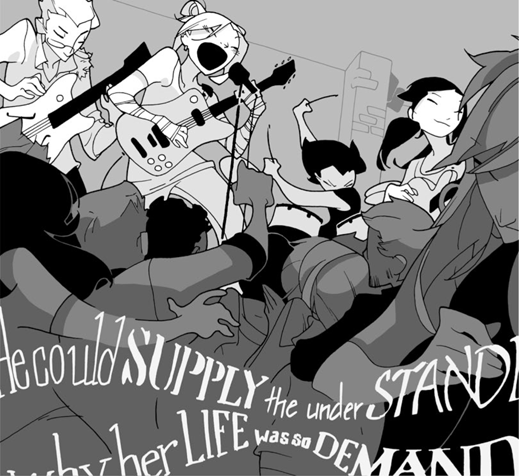
I caught Tamaki's series occasionally in its online publication—but so occasionally that I was unaware that it wasn't just a series of quirky one-off gag strips. Reading the entire thing on paper and in a single sitting was a joy.
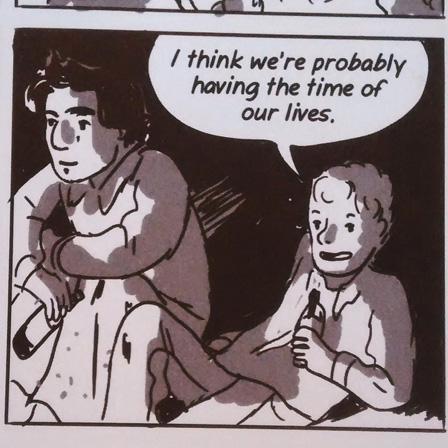
Obata pens a story about a young woman who really has no home. She's long expatriated from Japan to the UK, but is still of course Japanese and friends and co-workers still interpret her social differences as being directly tied to her national origin. Neither is she at home with the country she left. Just So Happens has the woman returning to Japan for a funeral and investigating her self and perceptions. It's a quiet work—and rather lovely, featuring some of the most beautiful art of the year.
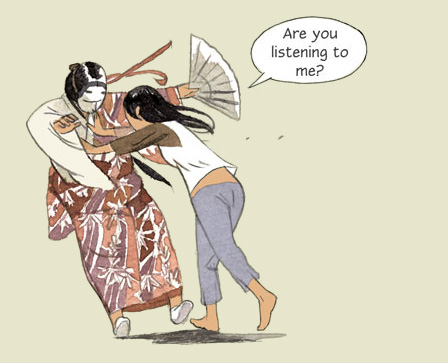
The Oven is a well-wrought glimpse of greener pastures and how two people can love each other and still fall apart. It's a utopian world where genetic expression is regulated and couples with bad genes cannot procreate. Eric and Syd think they want a baby, but Eric has a gene for acne so they leave civilization for a hippie commune so that they can breed it up unrestricted. Neither are sure they want this, but they want to give it a shot. It's not easy and by the time they realize that their eyes were bigger than their stomachs for this new lifestyle, it's too late to make a decision that won't destroy something they've built together. Good, simple, worthwhile.
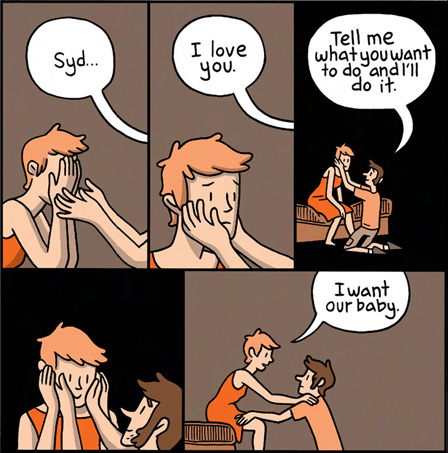
JH Williams is a mystery to me. He is an entirely gifted illustrator and designer. He experiments (sometimes wildly) and many of those experiments are perfect. Like this example where the panels of the page are the teeth of the Corinthian's eyes—on the pages introducing the Corinthian.
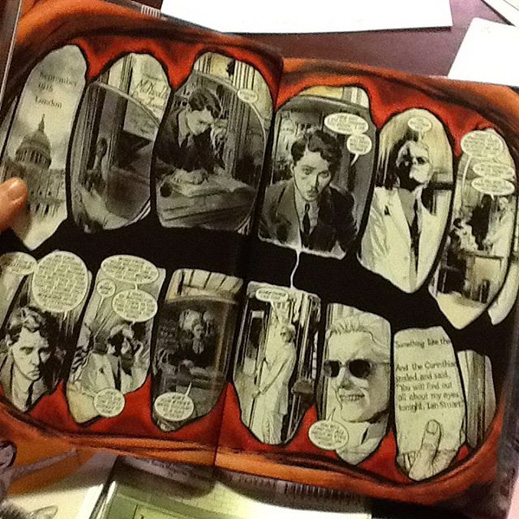 This page introducing the Corinthian has
This page introducing the Corinthian has
his eye teeth functioning as panels (!!)
At other points, his layouts fumble and confuse the reader, making it difficult to ascertain which text should be read next, which panel should follow from the present. Williams simultaneously elevates and diminishes Gaiman's tale. But he elevates it far more than he diminishes it.
I'm always pretty leery of anthologies because even the best tend to be a combination of great things, middling things, and shabby shabby things. Generally, they'll major on the middling things. Dream Fossil, though, does much better than expected and should be a strong value for any fan of Satoshi Kon.
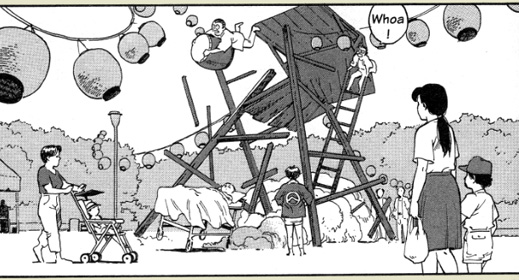
Kon is actually probably the only celebrity death that has affected protracted mourning in me. I still mourn our loss of him. Too young and with too much promise. He was amazing. And this anthology of comics shorts gives a fair taste of the years between when he assisted on Otomo's manga, Akira, and the beginning of his film career. The art is often straight out of Otomoworld, but the ideas and stories spit a lot of the idealogical fire of Kon's most famous work (his films and the televised Paranoia Agent). We see a lot of his thematic culture alive and growing in these early works.
And fortunately, none of these comics are bad, which is a victory for any anthology.
On the heels of Lovecraftian noir Fatale, Brubaker and Phillips elect to do a straight-ahead murder mystery set in the Golden Age of Hollywood (Clark Gable even makes an appearance). With two volumes out and probably two remaining, I'm not certain where the story's going exactly but I'm delighted to be along for the ride.
Jason Shiga's story of immortality is kind of a diabolically clever math problem. It twists, it turns, and it constantly has me saying "Oh-ho!" as I turn the page and find everything has changed once more. As of writing this, he's 600+ pages in and at 85% of the story. Everything is heading toward a massive, exhilarating climax and it is certain to be worthy of our time.
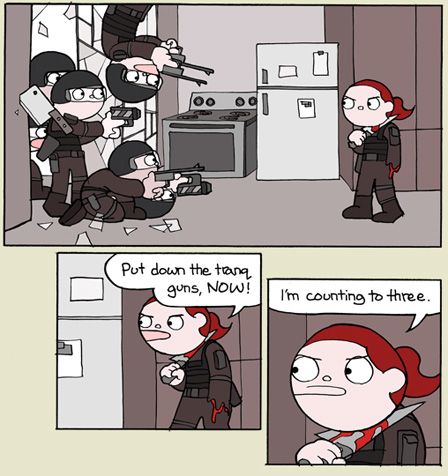
Eat More Comics (the comic with possibly the least appealing cover of all time) is subtitled "The Best Of The Nib!" As an anthology of a variety of comics that appeared in The Nib, my wish is that the book would have been shorter and called "The Best of the Best of the Nib." Because while there are some sublime works included, there is also some plebian dog crap. Usually, it's the political cartoons that are the festering blights corrupting the value of the book. And often, I agree with the thesis of these comics. They're just so dunder-headed and lack so much nuance that they can't come close to communicating anything worthwhile. The essay comics and journalistic comics, however, are almost all fantastic. I'm glad I bought the book but I wish it could have had an editor with a wiser eye for value (or an editor with greater strength to follow their wise eye).
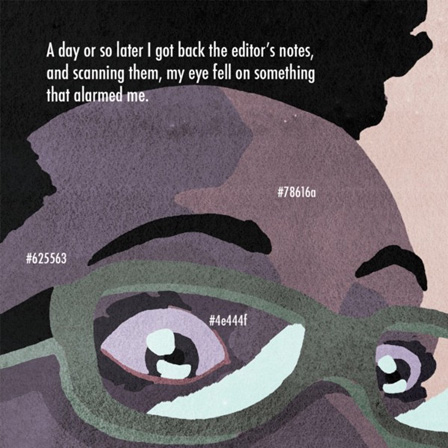
My favourites of the bunch included:
- #lighten up
- False Idols: Boomer Icons and Their Crimes
- A Lost Possibility: Women on Miscarriage
- San Francisco's Class War by the Numbers
- Just a Word
- Hart Island Hallelujah
- Longstreet Farm
- Crossing the Line
- Impossible City
- Sex Positive
- Umbrella Blackout: China's War On Digital Activism
Thing 1: Ada Lovelace was pretty badass and her story is more fascinating than a lot of stories.
Thing 2: The Thrilling Adventures of Lovelace and Babbage is an exciting book about a lot of really boring subjects.
There's a lot of math and engineering and economic theory that form the bedrock of this book, but Padua approaches it in inventive and humourous ways. I'm sure people who actually have an interest in those subjects will be over the moon for this book, but for the rest of us, Padua still crafts something interesting and informative and funny and crisp. And her footnotes are nearly as interesting as those that inhabit Jonathan Strange and Mr Norrel.
Sam Zabel is a book about the morality of the mind and the responsibility of the artist. It's a line of inquiry that is currently the focus of furious (and usually unfocused) debate in the contemporary pop-cultural landscape. Gamergate, women in refrigerators, 50 Shades of Grey, sex in Game of Thrones. All of these discussions circle the same drain. Sam Zabel picks up the discussion, and while not coming to any answers, really does remind us of some of the principal threads.
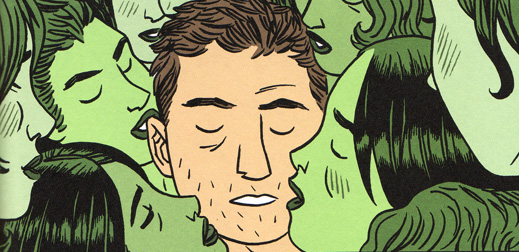
There are probably three kinds of people Sam Zabel is meant for: 1) those who have a community with whom to discuss the Idea Books they run across; 2) those already invested in the book's principle question regarding the nature and place of fantasy; and 3) those with a special interest in nude green women. And man, if all three of those describe you, consider this book a slice of your heaven.
Ian Edgington and INJ Culbard team up again to deliver a magnificently inventive set of worlds (whose nature I will refrain from discussing). In any case, they've created a delightful science fiction adventure and this first part has me well onboard for the remainder. I take a special joy in watching Culbard age his characters little by little—by three months here, by six months there.
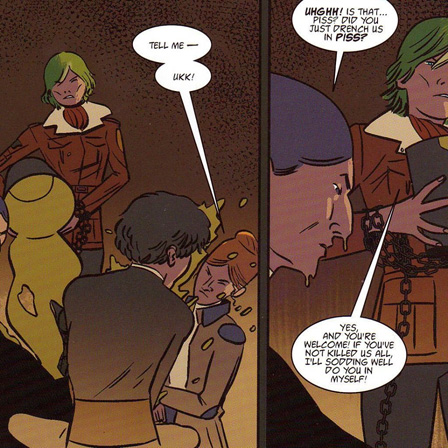
In the seventh volume, Mori takes another excursion from series favourites Amir and Karluk to investigate one more marital custom of the 19th century Caspian region. In this case, two already married women covenant to be lifelong sisters. They get their own ceremony and vows and non-sexual form of romance. It's fascinating because it broadens the perspective, allowing us to better see how our cultural binary for marriage-type relationships of having sex vs not having sex seems a bit narrow and offers speculation that sex may not be the ultimate culmination of love between two people.
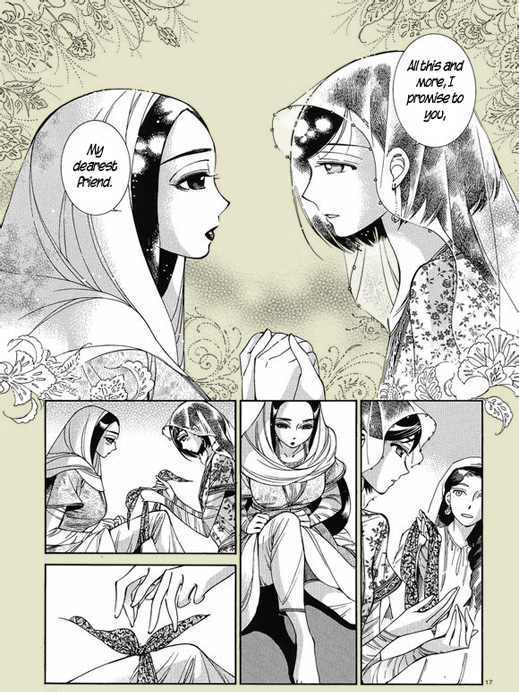
Unflattening, as a doctoral dissertation (with its continuous use of citation and its existence not as narrative but as extended argument) is a deeply ambitious project. And probably even an almost entirely successful project. It's worthy of your time and its greatest value may be in discussion of its ideas with others. I recommend it to you and recommend (as the best reward for the use of your time) that you engage in the critics's work yourself.
Fumi Yoshinaga continues to put out a volume per year of one of the most interesting alt-history experiments I know of. For those keeping up with the series (on vol 11 now), there's not much to say save for that she continues to bring the fire and puts out a book that is every bit as engaging as its earliest chapters. (And I continue to get completely furious with these people and their political machinations and the tragedies they perpetrate in the name of securing for themselves personal power.) For those who haven't begun the series, check out my review, and then pick up the first volume and give it a shot.
Both Kelly Thompson and Meredith McClaren had banner years in 2015. Thompson's blowing up with Jem and McClaren had three books published last year. After what I initially felt was a bit of a shakey start (not helped by the poor choice of very square text balloons—the tails are neat though!), Heart in a Box resolves itself into an engaging, lovely little story about hearts and what we give up when we love. I'm glad I picked it up. And McClaren's art is pretty well delicious.
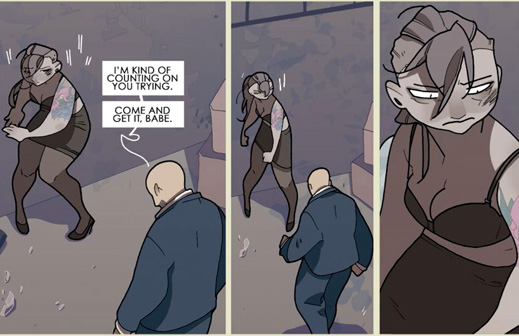
Urusawa's story about an unstoppable killer vs the doctor who saved his life as a child keeps on trucking. It feels overlong and padded but, simultaneously, Urusawa does such a good job that we can largely forgive him the excess. The story could definitely use tighter plotting and fewer excursions, but because those rabbit trails provide better and clearer portraits of the protagonist, they ultimately help more than they hinder. And of course, his art is still top notch. The story wraps later this year, and I can't wait to see what twists and turns are in store.
Emma's been out of print for ages (which is evil), but Yen Press brought it back in lovely double-sized volumes (which is good). While the art isn't as intricate as Mori's later work in A Bride's Story, it's still beautiful and the story of cross-class romance is delightful and thrilling.
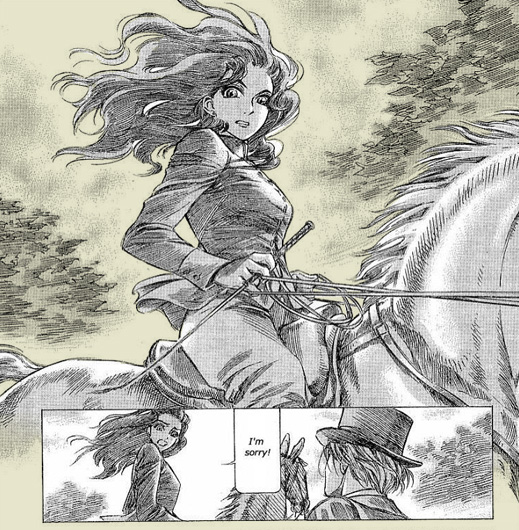
The epic journey of Evan Dahm's third comic in the world of Rice Boy continues to unspool in exciting and interesting ways, and Dahm continues to prove himself one of our great imaginations in the medium.
Vinland Saga is an explosive story from the viking era about the rise of Cnut the Great that doesn't believe in status quo. That so many of the characters are apparently Naruto-style superhuman took some getting used to but that kind of thing has its own charms.
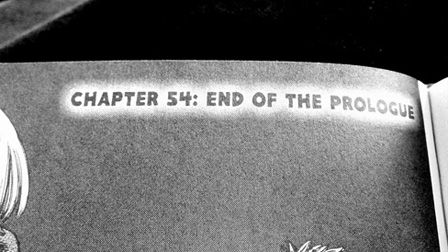 Definitely going for the epic saga feel
Definitely going for the epic saga feel
2015 marked a pretty great year for Sakai's rabbit samurai. Volume 29 represents more strong work. Maybe not as sublime as vol 28, but 28 was some of the best work of Sakai's career—so that 29 is nearly as good is still high praise. Add to that Sakai's Elseworlds-style conclusion to the Usagi legend (in the stand-alone graphic novel, Senso) with a War of the Worlds-style pre-invasion force from Mars. Good fun, good year.
I don't know where this is going but after one volume, I'm in love with the world Ellis has forged and am interested to see who the story finally settles on (as main character after main character take vigourous and final hold of their mortality and depart the series for good). Howard's art is stunning as well—and perfect for this story.
An engaging street-level crawl through a night-and-day following immediately the fall of Nanjing to Japanese invasion in the lead-up to WWII. There's nothing really wrong with the book (it's well done), but its intimate nature keeps the vantage discrete, and I occasionally felt that panning out to the wider misery would have been more impactful. Still worth a read and its PG-13 nature will make it useful reading for teens looking to learn more about world history and the effect of (very NC-17) military actions on local populations.
The second volume of Bandette is as much a joy as the first. Tobin continues to write the character with a punchy flair that makes light of her thief's life and its mortal dangers—and Coover is still throwing aces in terms of the drawings. A whimsical read.
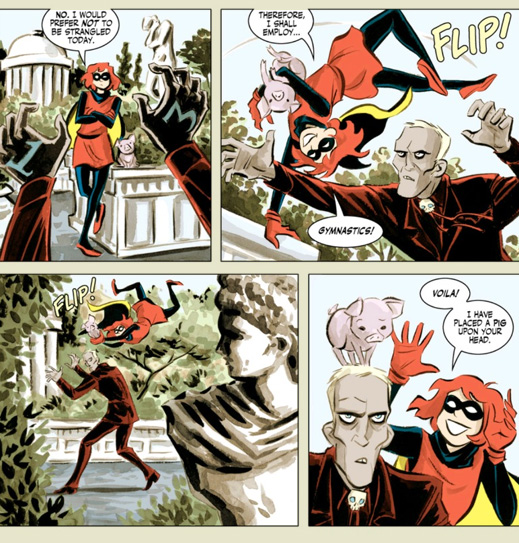
This high school romance between two teen girls in China is still rather one-sided in the romance department, so there's lots of that dramatic tension that naturally draws from the Unrequited Love engine. Also, Tan Jiu keeps his lead charming and emotive, so it's a pleasure to watch her do whatever it is she's going to do at any given moment. This is so far only available on the internet, but as soon as there's a physical product, it will enter my library.
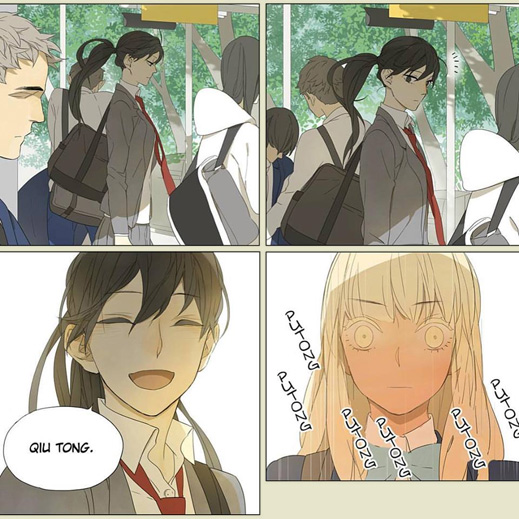 That look of joy
That look of joy
I'm not super familiar with the Chinese comics scene. That is, I'm not familiar at all. I've read (possibly) five Chinese comics ever. I don't know where Their Story fits within the industry there, but if a story as buoyant and bubbly and fun and straight-up enjoyable as this is at all common there, then the Chinese comics industry must be one of the best things ever. If it's not, then at least they've got a great example of where to aim. Their Story is one of my favourite things coming out right now.
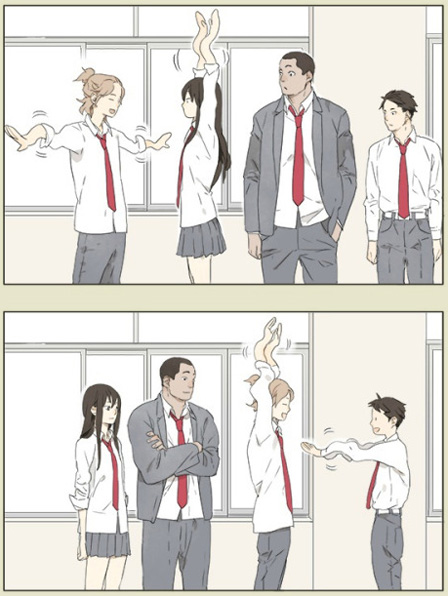 Seaweed, oh seaweed
Seaweed, oh seaweed
Ajin's a thrilling ride and I've been comparing it to the clever excitement of Death Note. There's some fantastic cat-and-mouse going on here, and Sakurai keeps things fresh by coming up with new ways to utilize the same basic set of powers. I not infrequently found myself smiling at the ingenious way the creator chose to get his characters into and out of scrapes.
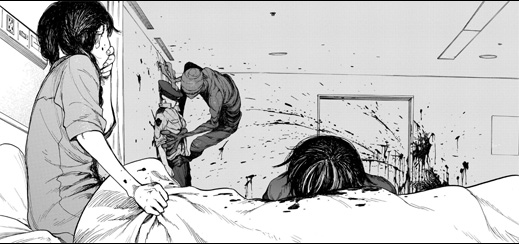
The pace isn't nearly so relentless as Death Note's. In the first five volumes, there are two major action set-pieces. These are pretty tremendous, but much of the series is psychological and relational in nature. So far (in six volumes), I believe this staggering of tensions has really worked in favour of the series, but we'll see if that continues to be the case. At this point, I'm pretty well along for the ride and the series would really have to drag out (like to 25+ vols) or go south pretty quickly for me to lose interest. For now, I'm just having a lot of fun.
2015 was apparently the year in which I, who don't usually go in for science fiction, read a bunch of science fiction and liked it. I don't want to make this a habit necessarily, but I have to admit I've enjoyed myself.
Kenya, set in the post-WWII '40s and in Kenya (surprise!), is pulpy and fun. In a lot of ways, it's kind of like a more mature Tintin book featuring a female protagonist and dinosaurs and alien visitors.
In a bizarre decision, Cinebooks (the publisher) decided to edit on underwear in the couple nude scenes but retained dialogue like "All I think about is you. And your little breasts and lovely pussy." It's a kind of hilarious bit of random censorship that briefly takes the reader from the work but didn't ultimately diminish my enjoyment of an otherwise fun story.
Another anthology, largely well done. This one features stories by Ken Niimura, who did the art for I Kill Giants. He alternates stories between fiction and memoir, with the fiction being much stronger and more enjoyable than the memoir. (Though, bias alert, I'm no great fan of memoir these days.)
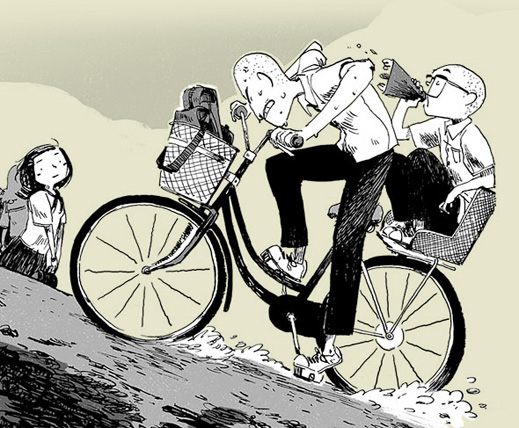
Another long-running series you're pretty much either in the bag for or you aren't. 2015 wasn't quite as exciting as the previous year's confrontation between Liz and the Black Flame, but even so it's a strong read. Following Howards' evolution into a Conan-like figure has been fun, and even Enos is getting some good air time and character development.
McCloud's illustration work is a bizarre chimera of intricate and sloppy. His page designs are tops and the storytelling from panel to panel is lovely. His linework is rough and is often just layers of scribbles. Shadows are a mess and some characters' hair is just hilarious. But for all that, there's a certain cohesion to the style. I'm always kind of aggravated by detecting the obvious presence of digital tools in comics art, but after a few minutes managing my prejudices, I gave in to the story and was largely able to forget my tastes.
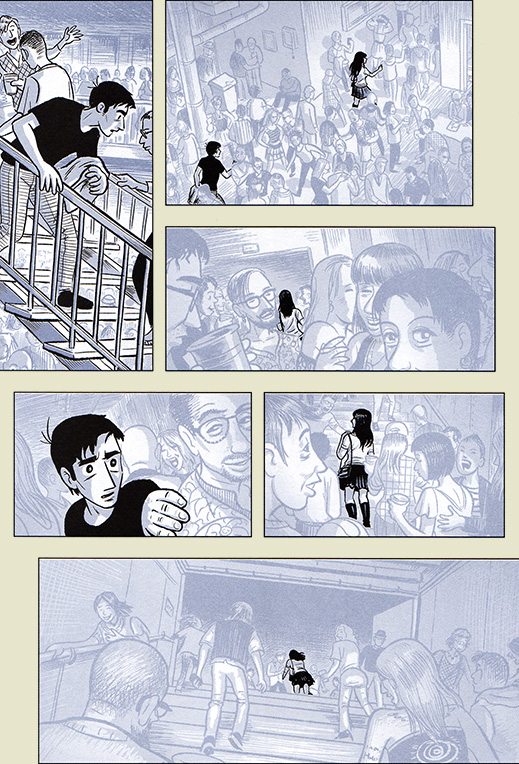
While vol 4, "The Case of the Lonely One," is probably my least favourite of the Bad Machinery cases, it's still a great read, and the words John Allison puts into the mouths of these teen creatures are amazing and delightful. And here in internet-land, the mystery kids are older-style teen people and again up to solution-finding antics at scarygoround.com
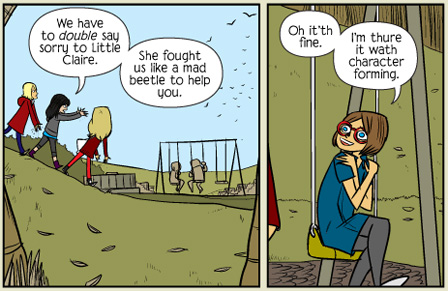
Nobrow's cultivating a lot of good will through the superb little stories that find themselves represented in the company's 17x23 project. The Hunter is a short story well-wrought. The clear, pixelated lines give the tale a fitting otherworldly cast.
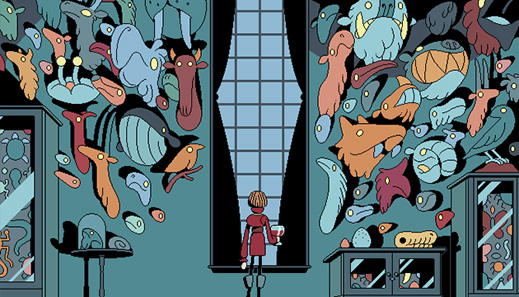
On the heels of Flowers of Evil, Oshimi crafts a weird story about a post-highschool loser who somehow has his mind transferred into the head of the pretty girl he's been stalking. Or is that what happened? After all, his body seems to be doing just fine without him. In any case, Mari or the boy who's inhabiting her has to learn how to behave all over again. And whatever Mari's life used to be, there are changes afoot. Stories like this kind of stand or fall on their conclusion and we don't have that yet, so I'm hovering it here mid-list until I know exactly how good or bad it's going to be.
I missed Planetes the first time it came around so I'm glad that it's getting these deluxe reprints (same style as Viz's Monster reprints). Volume 1 is solid work: well-drawn, interesting characters, and room enough for a good story to assert itself across volume 2.
After years and years and years, Willingham and Buckingham finally draw a close on their faery tale epic. It's a good ending and one that satisfies. Fables understandably lost some steam as it moved into double-digit volumes but remained strong and worthwhile throughout (minus the pretty awful "Great Fables Crossover").
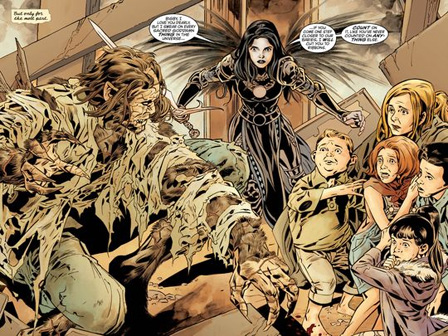
I don't know how many arcs are planned for Wolfsmund, but the first one definitively ends in 2015's vol 6. And as per the rest of the series, the climax was pretty grusome. It actually took me six months to come back and finish the volume, because while reading the first time I was so overcome with revulsion that I grew faint and didn't really want to continue. Glad I did though—it's solid work and the upcoming volumes should prove exciting.
I honestly didn't know how exactly to rate this. If you haven't seen the movie, the comic holds a great little story and tells it well with some delicate illustrations. If you have seen the movie, the comic is pretty much a straight adaptation and offers nothing really fresh to the story. If you haven't seen the movie, it's one of the better comics around. If you have seen the movie, it's a mediocre comics experience. I split the difference for this list. (Really though, just hunt down the movie.)
Another continuing series that still merits mention. Prophet is good and intriguing, and I look forward to seeing how Graham will develop his universe through 2016's installments (Prophet Earth War) in the evolving lore.
The first of the series arrived in the US late in 2015. It was an exciting, moody, Tintin-esque adventure and I'll be happy to see more.
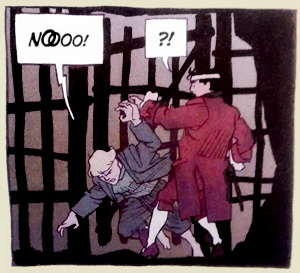 Love the lettering on that "Nooooo"
Love the lettering on that "Nooooo"
2015 saw the release of the penultimate volume of the series, in which all the pieces are laid in suitably awkward places. While Knights of Sidonia has largely played safe with its narrative structure, one never knows what Nihei might do. (He's got Biomega on his rap-sheet after all.) So I just wanted to take a moment to celebrate the rich world he's created and explored through the first 14 volumes of the series.
Jonathan Case's 1930's buoyant crime romp is a fun diversion and light revisitation of the race and class troubles that governed the times. I'll admit that I was a bit broken-hearted that the book wasn't as beautifully coloured as its cover.
More lit- and history-humour from Kate Beaton is always welcome. Still, I'd be more excited by a collection of Beaton's memoir-based work like "Ducks" and her family comics. (Which is saying something since I'm not a fan of memoir comics.)
Moyocco Anno's story about runaway whores in a frontier town is wild and gorgeous and sadly looking like it might not ever go beyond ten chapters.
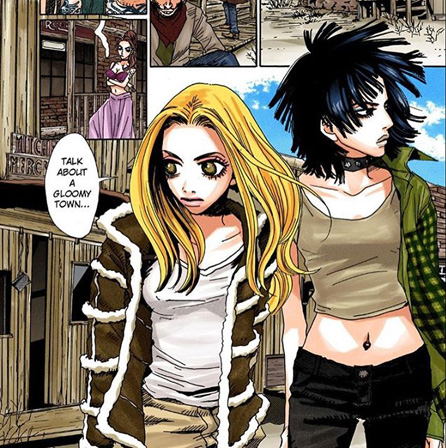
When I first heard of The Rise of Aurora West, I was a little bit skeptical. I loved the art and a couple moments from Battling Boy (from which the Aurora West titles spin off from), but on the whole the pacing was awkward and distancing. When I heard there was a spin-off series featuring a different artist (I wasn't yet familiar with David Rubin), I let it slip by unheeded because I honestly didn't really care. Then, seeing my library had The Rise Of Aurora West, I thought it wouldn't hurt to check out. And it was actually pretty great! (Great enough that I went out and purchased both Rise and its sequel, Fall.)
And just like Rise, The Fall of the House of West builds a lot of character and human moments into a storyworld that was previously pretty but a little sterile in terms of empathetic characters. Fall wraps up the origin story of Aurora West and builds the foundation for Haggard's fall (as witnessed in Battling Boy). It's a solid read, which I (wrongly or rightly) attribute largely to JT Petty's scripting.
Fantasy is no longer really much my fiction of choice, but occasional gems win my attention for a little while. Autumnlands is a charming creation and I'm interested to see how Busiek develops its lore.
Last year I listed Crunchyroll's simulpub of the book. It was a pretty weak translation and throughout I was never quite sure who the Lucifer of the book's title referred to (the title was even then labeled: The Lucifer and Biscuit Hammer). Seven Seas does a good job smoothing out the wrinkles of the story—which I already liked—and it was a pleasure to read the story in five large paperbacks instead of simply on a tablet's screen.
There were a lot of comics catching people's eye in 2015, but Princess Jellyfish was nearly pure joy. It's a fun book (coming to print in 2016) and is worth pretty much anyone giving it a shot. I was skeptical at first, as it didn't seem to intersect much with my interests, but the at-first-standoffish cast began to grow on me and I eventually became invested in their lives and idiosyncrasies.
This treatment of the rise and work of Christian Dior is gorgeously drawn (a very pretty book) but ultimately a fairly shallow treatment of what probably could have made a pretty interesting story.
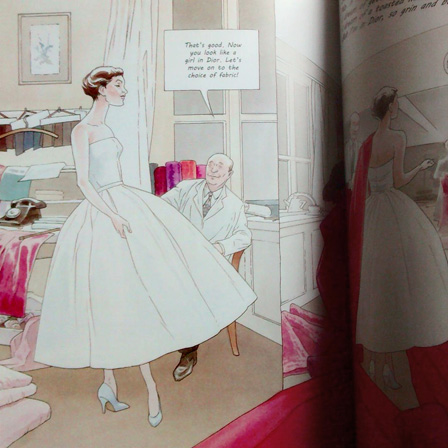
Noelle Stevenson has put together a delightful little friendship drama masquerading as a psychological profile of a reluctant fantasy villain and his new henchwoman/beast. It's generally light-hearted and cynical so when the pathos hits, that heightens the value of the melodrama in delicious ways.
The art feels very much like a tumblr-era take-off on Mike Mignola's toolset (though may also owe a debt to Gabriel Ba) + flat colours. It's always a pleasure to see the kind of storytelling careful hands can make through minimalist principals. Apocalyptigirl both is very much a part of the comics zeitgeist and one of the better examples of where that spirit might take us.
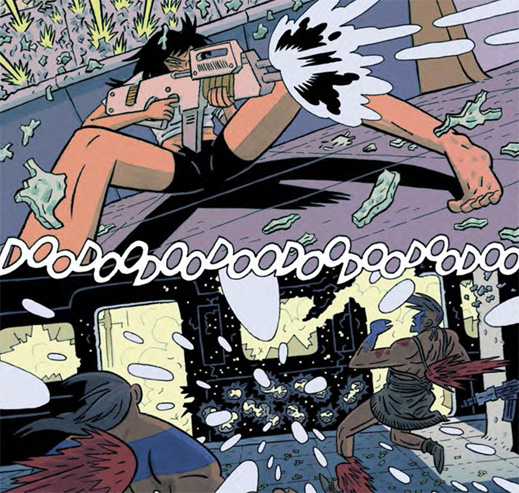
The story continues to gradually trickle out but seems to be on the edge of climax. Maybe seven more chapters? Another one where the conclusion will affect its ultimate rating because in many ways it's more about the destination than the journey, and its ends will justify its means.
Another of Nobrow's 17x23 that I enjoyed. A man finds a lost-and-found store full of things he's lost over the years and even decades. It's a fun idea and well-done.
Space Dumplins is the most junior high book of any book I've ever read. It's a tremendous exercise in scatology. It seems a bit of a waste for Thompson to spend his prodigious talents on something so trite—but the book is still fun. Every page is an eyeburst of colour and detail, which may or may not be to taste.
One more strong series that continues without complaint beyond the fact that it's excruciating that Fantagraphics only releases one volume per year though the series is long complete in Japan. They're lovely editions though, so it's not like I'm ungrateful.
Man, I wished that the author's note about the book's origin had been printed as a preface instead of an epilogue! That would have enriched my experience as a reader so much more. Instead, I finished the story thinking, "Eh, that was alright," and then I read the note and thought, "Oh, waitaminute, that was more interesting than I thought." It's a nice story but maximum value comes from knowing its origin story—which is why it's not higher up on the list.

As I've written in review, I'm a fan of Akamatsu's Negima Magister Magi. UQ Holder is a largely stand-alone sequel taking place 100 years later, and it's always been pretty okay. 2015 changed that by introducing some story arcs that helped push the book into territory approaching my favourite volumes of Negima.
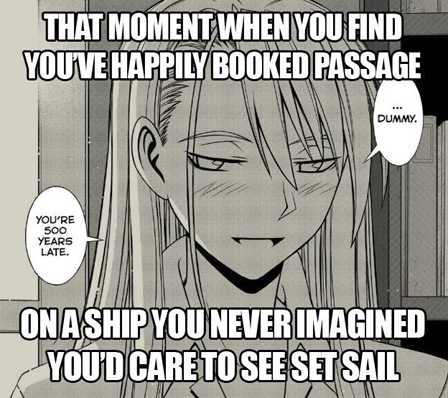
John Allison's writing and Lissa Treiman art combine for a series that's pretty much a blast. It's not as good as Bad Machinery but, surprisingly, the art is not at fault. I say "surprisingly" not as any knock on Treiman (who is obviously talented), but mostly because I've come to expect a lot A LOT from John Allison's writing. While still funny, he's actually running slightly tepid here. The story beats more resemble an actually funny version of Dumbing of Age than what we're used to in his Scary Go Round work. It's not bad by any stretch (hence it making rank here), but it's just not quite as sharp as what he's produced in other venues.
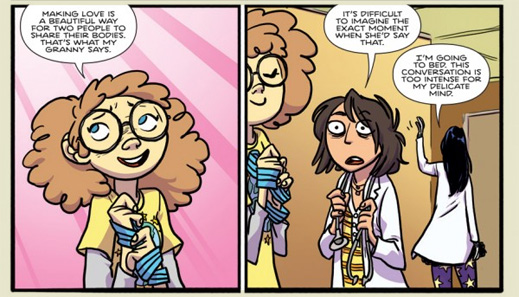
This is Jennifer Hayden's memoir through the lens of her breasts, from anticipation to impatience wondering where they were to disappointment to a full bosom to her mother losing one to cancer to childbirth and breastfeeding to her own cancer and double masectomy to reconstruction.
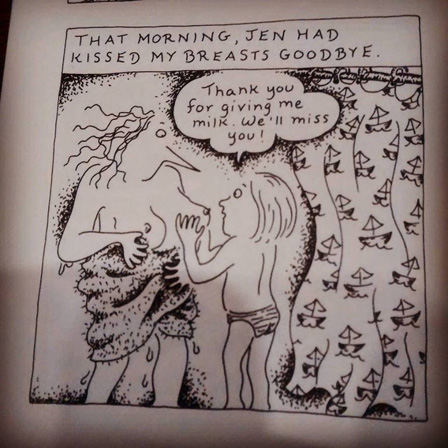
It's a funny and sad and triumphal book. I cried a little at several parts and laughed loudly at others. The book is strongest in its introductory portion showing Hayden imagining life with breasts and impatiently awaiting their arrival—and then again once Hayden gets cancer. As with most memoirs, we have to endure the college aged version of the storyteller who will always be insufferable (because we all are at that age). The middle section feels a little bit wobbly and unfocused, but once cancer takes the stage in the final third, the book regains its footing and finishes strong.
Metrics
Breakdown by Creator Sex
This is a bit of a funny metric for me to take a look at because it unveils stuff I'm generally completely unaware of and even coming up with these stats is forcing me to discover things I never really cared about before. I've never been good at guessing the sex of comics creators. Is Kelly Thompson a man or a woman? Who knows! I mean, I do now, but I didn't before. I gave up trying to guess creators' sexes after I discovered one of my favourite female creators, Andi Watson, was actually male.
In any case, I'll be presenting four charts. One will display creators without respect to their creator's role. The others will break down the sexes along the lines of solo creator vs writer vs artist. Apologies, but I won't be investigating inkers, colourists, or letterers. I recognize these are essential creative functions in the production and value of the comic, but 1) I am too lazy to research all those names, and 2) I'm still of the mind that the principal comics product rests on the shoulders of the writer and penciller (there are of course exceptions).
All told in my list there are 100 creators represented. A nice number. There's actually fewer because some creators worked on multiple books, but I'm counting them for each book. For instance, John Allison counts as a creator for Bad Machinery and as another for Giant Days. Likewise Kaoru Mori gets counted twice as well, once for A Bride's Story and once for Emma. Because the tally would get crazy, I'm not counting any of the variety of creators from Eat More Comics (incidentally, that one book would skew the male/female numbers pretty substantially simply because it's a pretty even split down sex lines, I think).
Here's the first two charts:
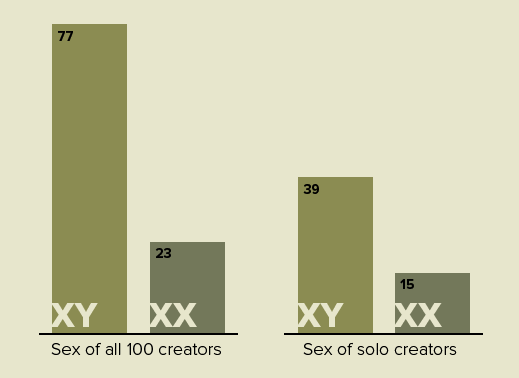
23% of all the creators involved were female. Just off the top of my head, that's a stronger result than previous years (I haven't run any metrics on this stuff before). And when we talk single-creator books, 28% are the work of female creators. So we're definitely losing parity on team-created books.
There are only 2 female creators in my Top 10 books (a writer at #1 and soloist at #3) and 8 in my top 20. While female creators are making more and more great comics, there are so many men embedded in the industry with decades of experience that the numbers still change pretty slowly. That's probably to be expected and I think 20 years from now when all the current crop of female creators have been embedded for two extra decades, we'll start seeing a more reasonable split.11And of course, all this is going to be subject to my ever-evolving tastes.
Here's the next two, dividing writers and artists:

Things look more grim on the team-creators front. 13% of writers are female. That's 13% of the people responsible for creating the narrative. Not just a little lopsided. 22% of artists on team-created books are female. That's a bit better but still not fantastic. Something to keep an eye on at any rate.
Breakdown by Nation
While I think this would have been a more interesting breakdown had I the time to breakdown by national origin, for ease I'm going to just stick with nation of original publication. This gets a little sad when you have a book by Spanish creators being published in France or something like Daytripper, a largely Brazilian work getting a US credit because it was published through Vertigo. Still, I hope the chart will be interesting regardless.
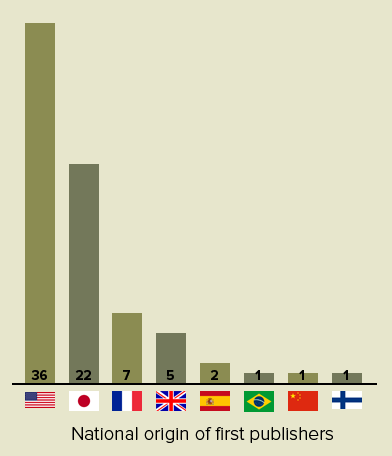
Really I'm not sure that this says anything much beyond that: here in the US, I find access to US and Japanese comics much easier to navigate than other countries. There's some import of UK and Continental books, but it's spotty. Many of the books I get from UK publishers, I have to get from Amazon at import prices (which are never that cheap). So, generally I stick with what's readily available—which is usually fine because its not as if there aren't a ton of great books right here at my fingertips.
Breakdown by
Single Creator vs Team
This one gets especially tricky as many creators who get a single-name credit on their books actually employ a team of assistants. This is especially true with manga. Still, for the sake of this article, I'll treat single-credited books as having a single creator.
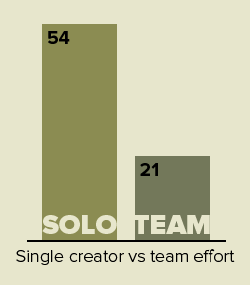
Apparently either single-creator books are generally the best stuff around or I just kind of prefer the kind of stuff that comes out of the singular sense of vision that only comes about when a creator keeps all their fingers in all their pies. Still, it would take more than investigating a single year's books to figure out if this is the case.
Notable Exclusions, part 1
There are a lot of books that didn't make it on the list that I'll get questions about or otherwise feel I should mention.
Books I Really Wanted To Read But Still Haven't Acquired
Besides Phillipa Rice's Soppy, which looks delectable, the 2015 book I most regret not having read yet is Jens Harder's Alpha. Every year, I hope to see a book that challenges and excites me as much as Adam Hines' Duncan The Wonder Dog. I haven't seen anything in the neighbourhood for the last couple years but from what I hear, Alpha might fit the bill. I have it on order but it won't arrive for another couple weeks.
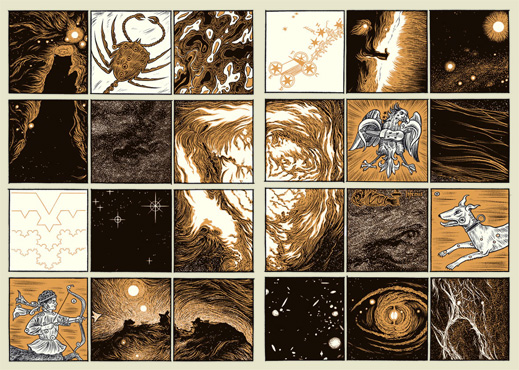
Books That Almost Made It
- Moose is a pretty nice darkly cathartic story about a bully and a moral choice (it was on the list earlier and I even built the header graphic for it).
- The Oyster War is is fun. I recommend it, especially if you have young readers interested in wacky East Coast history.
- Tiger Lung is a neat paleolithic set of stories about a cave-man shaman named Tiger Lung. It's good but I wanted more time with the character to get into his skin.
- Decender is a cool little sci-fi story about AIs and celestials and galactic conflict and a little boy robot named Tim.
- Abe Sapien is still going strong and fills out some of the corner pockets of the BPRD's hell on earth.
- Southern Bastards is still a strong book and vol 2 was better than vol 1, dodging some of its goofy missteps. I'm still unsure what I think of how it stereotypes the South in ways that are still broadly acceptable that wouldn't be viable with most other peoples or regions or nations.
- We Can Never Go Home was a lot of fun until it just sort of abruptly ended. The conclusion fell a bit flat for me.
- Witchcraft Works is a fun little twist on typical shounen tropes, with the lead being powerless and protected and referred to as the ridiculously overpowered main girl's princess. As the story goes, it looks like it may conform more and more to typicality, where the guy unlocks his potential and becomes the most powerful character around. Still, for now it's a lot of silly fun and I enjoy it.
- Vacancy by Jen Lee shows a lot of promise. It's funny and spry, but it features a kind of young millenial character who sort of gets on my nerves so I wasn't able to enjoy it as fully as I might. It's still a good book though.
- Sithrah, vol 1 by Jason Brubaker is gorgeous. One of the most beautiful things I've seen this year. It's pretty slight though, mostly only functioning as preface to a larger work. Not a lot of story comes through, so I'll probably have more to say for the 2016 list.
- Little Robot is a great little book for your kids. Low word count and charming characters make it nice for very young readers too.
Good Books I Didn't Keep Up On
There are a lot of books I like but just don't have the budget to follow religiously. I will catch up and then fall behind for a couple years and then catch up again. Some of these are:
- East of West
- Chew
- The Sixth Gun
- The Summer of Blake Sinclair
- ...probably others I'm just forgetting
Self-Promotion!
In 2015, I published what my kids think is a pretty great graphic novel (intended for kids, ages 2-7). I couldn't rightly include it in the list, biases being what they are. Still, I wanted to mention it simply because I put a lot of work into Monkess the Homunculus. If you're interested, here's a video of the whole thing:
I feel bad about including this. But only a little.
Notable Exclusions, part 2
Killing and Dying
Killing and Dying is a well-crafted book that I just didn't enjoy. Two weeks ago, I still had it on the list but as I read more and more stuff I preferred, it was gradually shuffled off the bottom. Tomine is a tremendous artist and his storytelling is on point, but I just don't care for the stories he tells. Or more, I don't care for the characters he tells stories about. They're all very alienating to me and don't reflect the kind of people I know or care to spend time with. I realize that there are small people, petty people, who inhabit this world. But seemingly by Tomine's watch and across the stories of his I've read, the basic foundational characteristic of his protagonists is Selfish Misanthrope. Of all the principal characters in Killing and Dying, the only one I felt like I could relate to was the woman from "Go Owls." I think we've probably all known or have been the person who, through a series of betrayals from life, take on the self-esteem of a turd and so put up with all kinds of crap that a younger, more heartstrong version of us would never have dealt with. I did also enjoy "Translated, From the Japanese"—though that featured no proper characters at all.
I've decided that the way I would best enjoy Tomine's work is if he included a laugh track in his panels. This would turn his narrative from absurdly depressing to absurdly humourous (in the style of "Too Many Cooks"). Here are a few possible samples:
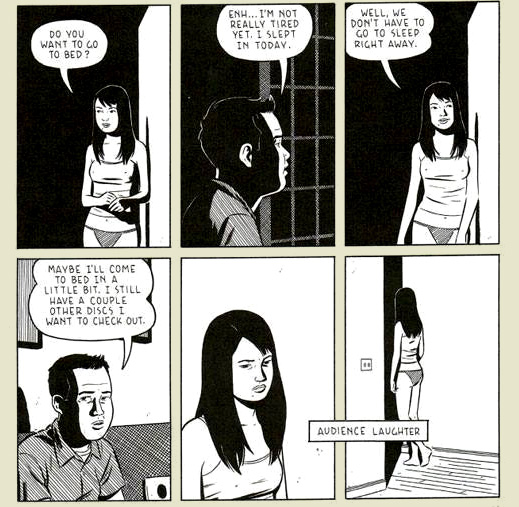

I'm being glib of course, but the end of it all is that Tomine and his narrative focus are just not my bag. (Save for Scenes from an Impending Marriage, which I loved.)
Okay, but what about Jem?
Jem's really going to town and I love that. It's getting a lot of critical play and seems to be pretty popular as well. I'm glad because I watched probably every episode when I was a kid (Jem landed when I was in junior high). But, sad to say, I didn't like the comic. Which is fine because not everyone has to.
I like Thompson just fine usually and loved another of her books from 2015 (Heart In A Box, see above) and have been a fan of Campbell (I liked Wet Moon when it came out). But Jem presents a couple obstacles that just kind of diminish my enjoyment on a personal level. And it's not even a matter of fidelity to source or anything like that.
Problem 1: I don't buy the Misfits seeing The Holograms as competition. They sit in entirely different musical categories and play to different demographics. It would be like Bikini Kill saboutaging Jewel concerts while imagining that Jewel was stealing potential Bikini Kill fans. Or Metallica getting upset that Weezer is stealing their gigs. Or The Beatles creating a massive rivalry with Miles Davis. (Obviously I'm having trouble coming up with examples that aren't fresher than 20 years old, but hopefully you get the idea.) I realize that the Misfits vs Jem is canonical but since this is a reboot and there's plenty of other things that have been recontextualized, it would have been nice to see a more believable motive for the rivalry.
Problem 2: There's not really any motive for Jerrica to keep the Jem identity secret (save, I guess, for a canonical melodrama engine for future stories). She doesn't need to advertise her identity as Jerrica, but to actively keep it secret is odd. It's not like the music scene isn't already filled to the brim with personas. Even in the space of the book Phyllis and Mary are pretty much just treated as their Pizzazz and Stormer personas. Nobody cares about their identies, so there needs to be a good motivation for Jerrica to keep hers secret. And if it's going to be Jerrica Gets Stagefright, that should be explored more than it has in the first volume of the series.
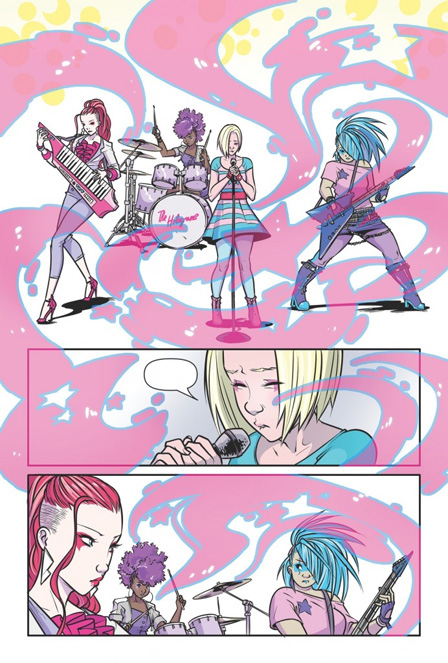
Problem 3: Visually, despite all the colour, the book just feels empty. Huge chucks of the book are just white, blank backgrounds—which make it feel like a collection of fan art pasted in to fill out story needs. Campbell's art feels rushed and mostly the only saving graces are the costume design and the vibrant colouring. Also, I will admit to not understanding Kimber's skin colour. I would have guessed she was meant to be albino, but I don't see her taking any precautions RE skin cancer. Otherwise I would have guessed full-body makeup, but we see her in bed ghost-white too and I'm skeptical that anyone would regularly sleep in body make-up.
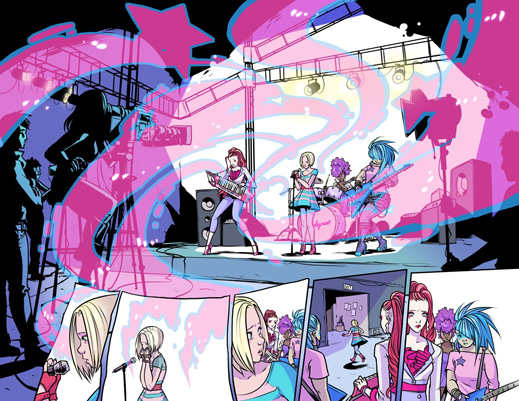
These things kept me from enjoying the book as I would have liked. Jem feels pretty well in line with a licensed property aimed, presumably, at a younger demographic, but it just didn't win my tired old crackly heart.
What? No Saga?
[I'm just copy/pasting this from my 2014 list, because it's as true then as now.]
This is a big title that has been conspicuously absent from past editions of my annual list. Every year I get the question, What? No Saga? In the past, it's been easy to rely on the fact that I hadn't read it yet. I tend not to get into on-going series simply because I don't enjoy the tension between releases. I don't tend to follow on-going television series for the same reason.
But now I have read Saga. So what's the deal, man? Why no Saga?
In an earlier edition of this list, one penned around early December, Saga had made the list. It was low on the list at 69, but at least it was there. So what happened was, I read other, better books. A lot of them. Saga's fine, I guess, but there were a lot of better books that came down the pike. Probably a lot of better books that I haven't even read yet, too. And that's the great thing about these lists: No matter how much you love Saga (or whatever else I didn't include), just look at all the other amazing books you can be enjoying. We're really living in a wonderful time for comics.
So, what do I think of Saga?
I think Brian K. Vaughan has created some wonderfully inventive characters. I, like most everybody, adore Lying Cat. I think Vaughan's story is engaging enough that I really would like to know what happens at the end. I think Vaughan's writing on this project is... not great. I think his use of hip lingos and jargons will age the work incredibly fast. What seems like cool-guy repartee now will read very differently in a decade. Like if a Marvel writer in 1982 had some cool punker kid that you were supposed to get behind saying stuff like "Groovy!" and "Far out, man!" Also, Hazel's narration is always a chore. The series probably would have been so much better without it.
I think Fiona Staples is a masterful illustration talent, and it shows in her figure-work. I love what she draws, all these crazy characters. She's perfect for it and the series is yards better for her involvement. Only... as good as her figures are, her backgrounds are just straight up the opposite. They are, like, the worst you guys. They drive me nutty—that such a talent would be reduced in that way. I'm guessing it's to speed up the art process to get issues out on time maybe, but man, I would gladly wait longer for release. Or maybe hire on an assistant for backgrounds.
But yeah, that's why Saga isn't cracking the upper echelons of my quantified tastes. It's fine if it's your jam. I love that about us. That you can have your thing and I can have mine and that maybe some of the above comics is where our tastes intersect and we can high-five each other and say "Groovy" like we mean it.
No Squirrel Girl? No Ms Marvel?
I didn't read these and I don't really plan to. Which is fine because they aren't written for me, I don't think. Part of it is that they're superheroes and we're all pretty well aware that I fell off that wagon and haven't figured out quite how to scramble back on. All my recent attempts have been abortive. I read the first four volumes of Hawkeye; that had great art but terrible writing (except for in the small at-home sitcommy scenes). Loki was okay but didn't excite me. I read the Thor volume that introduced Woman Thor and the writing was terrible. I just don't think heroes are my thing anymore.
I read the first volume of Ms. Marvel and wasn't interested in reading more. The art was fine but the writing felt like a regurgitation of Tumblr-, Imgur-, and Reddit-speak. Stuff like this:

Bland and uninteresting to me. I can get buckets of this kind of wit for free on the internet every night. No reason to pay for it. Because science.
I did like Kamala's pastor/priest-guy (or whatever the terminology is in American Islamic culture). He seemed like a good egg.
I passed on Squirrel Girl despite being a long-time fan of Ryan North's other project, Dinosaur Comics. For one, I don't seem to care for superhero stories and for two, Squirrel Girl doesn't interest me as a character. She's kind of like Deadpool like that. I just can't get invested enough from the panels and pages I see posted here and there to actually want to pick up a copy. Not when there are piles of comics and graphic novels and manga that I'm really excited about reading.
Sorry, fans of these books. It's not you, it's me.
Navel Gazing
Coming up with a ranked list of things for a personal site or post on Facebook is entirely different in nature from ordering things for a Serious Critical Outlet. I can't just post What I Liked because 1) I have a site mission to consider and 2) for the list to be recognized as worthwhile to most readers, it has to contain enough of those things that other people would list to seem legit. Which is mainly why I included post-op bits about why Saga and East of West weren't on the list.
And while I never cheer on popular books that I hate just for the concept of earning legitimacy, there's always a bit of artificial list reorganization that is maybe even subconsciously designed to appeal to a readership. And maybe I'll even bump up a smallpress indie book that you can't even buy because Man that makes it feel like I'm serious about comics and you should trust me. (By the way, I *am* serious about comics and you definitely *should* trust me.) But maybe I won't do that. Most of these motivations are present but subconscious.
Does the fact that I'm on friendly terms with some creators give those books a bump? I don't see how it couldn't, even if I'm not conscious of it happening. When you read a good book by a stranger, you think, "Hey that was good!" When you read a good book by a friend, your naturalu warm feeling for that other person blends with your experience of the book (because nothing social occurs in a vaccum) and now you think, "Man, that was a good book! I loved it!" And of course friendship also tends to soften criticism as well. Because we're not robots, you and I.
Also, I have to balance in some sort of subjective rubric for valuating a) What I liked with b) What is valuable and c) What is high in craft-quality. Every year, I find creating the list more daunting and more frustrating. Especially since not only is #26 not substantially "better" than #27 but also #26 is likely not substantially better than #45. I mean, it's a good problem to have. Lots of good books to read. And more every year. Essentially, we will never run out of good comics to read. It's like a golden age or something.
Good Ok Bad features reviews of comics, graphic novels, manga, et cetera using a rare and auspicious three-star rating system. Point systems are notoriously fiddly, so here it's been pared down to three simple possibilities:
3 Stars = Good
2 Stars = Ok
1 Star = Bad
I am Seth T. Hahne and these are my reviews.
Browse Reviews By
Other Features
- Best Books of the Year:
- Top 50 of 2024
- Top 50 of 2023
- Top 100 of 2020-22
- Top 75 of 2019
- Top 50 of 2018
- Top 75 of 2017
- Top 75 of 2016
- Top 75 of 2015
- Top 75 of 2014
- Top 35 of 2013
- Top 25 of 2012
- Top 10 of 2011
- Popular Sections:
- All-Time Top 500
- All the Boardgames I've Played
- All the Anime Series I've Seen
- All the Animated Films I've Seen
- Top 75 by Female Creators
- Kids Recommendations
- What I Read: A Reading Log
- Other Features:
- Bookclub Study Guides
